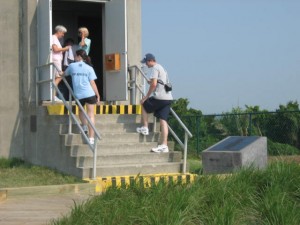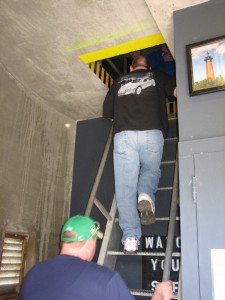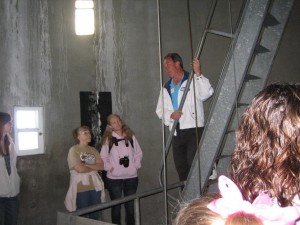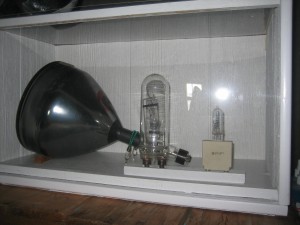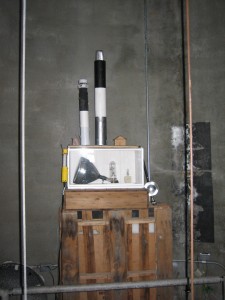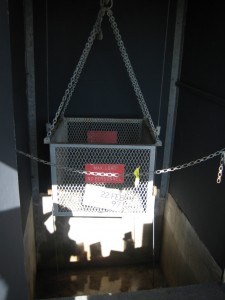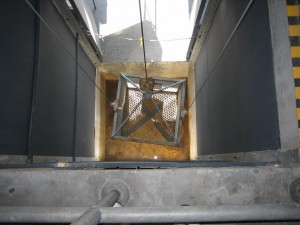Oak Island Lighthouse Virtual Tour – First 12 Steps
You are now numb and shaking all over from the excitement and begin to climb. You are still outside the lighthouse and climb the first concrete steps to the door only to be told by a smiling guide that the 8 steps you just climbed do not count towards the 131 steps to the top! You notice the merchandise table inside and donation box on the door and make a mental note to be sure and purchase some reminders from this momentous event and leave a large donation – IF you ever make it back down.
Once inside the door you finally get a look at the “ship’s ladder” steps and are relieved to see an actual metal step and not just a metal rung! To the left you notice all of the electrical boxes and note this is truly still a working lighthouse with 440 volts running up the cables to power the light at the top. And so the climb begins – up the first 12 steps and through the concrete portal to the second level.
Once comfortably on the second level and joined by the remainder of the climbers we press our backs to the wall and eagerly await the 7 minute history that one of the guides will give before the climb continues. The guide gives us a variety of facts about the lighthouse – height, construction, wall color, light pattern, candle power & distance light can be seen, information about the other 3 Cape Fear Lighthouses, and finally safety instructions – including a mention that 1 out of 10 climbers start the climb but change their minds before they get to level 4 (out of a total of 8).
There are several items situated on this level including a display of the 3 different bulbs that have been used to power the light including one of the original mercury bulbs that generated 70 million candle power making this the brightest lighthouse in the US from 1958-1962. We are amazed at the small size of the current bulb – the halogen bulb to the far right in the case. This tiny bulb still generates over 2.5 million candle power! Additional items pointed out include spare 36″ and 24″ reflectors, the Corps of Engineers GPS system and a few lighthouse 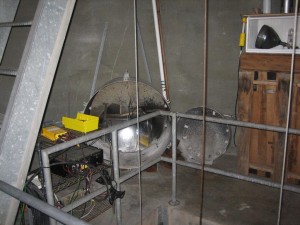 models left by visiting school groups.
models left by visiting school groups.
Our guide comments about the “elevator”, which is actually a wire mesh basket that runs up the middle of the tower in order to transport heavy equipment and supplies to the top – the most important of which is the holiday decorations that are placed around the top of the lighthouse in late November. It is noted that all of the controls have been placed at the top of the lighthouse to keep people from riding in the basket – which is strictly forbidden!
With final instructions on safety and the best way to climb, our guide leads the way.
Click the link below to continue.
The Climb
